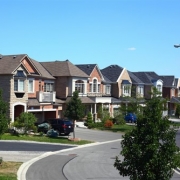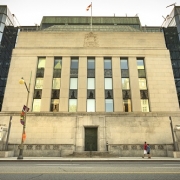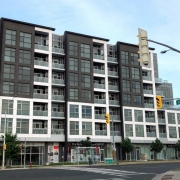The Canadian Real Estate Association (CREA) has updated its forecast for home sales activity this year and for 2020 via the Multiple Listing Service (MLS) Systems of Canadian real estate boards and associations.
Evidence suggests housing activity will continue to improve into 2020, with prices either continuing to rise or accelerating in many parts of Canada. Additionally, the Bank of Canada is widely expected to not raise interest rates in 2020.
Mortgage interest rates have declined, including the Bank of Canada’s benchmark five-year rate used by Canada’s largest banks to qualify applicants under the B-20 mortgage stress-test.
Under the $1.25 billion First-Time Home Buyer Incentive, the federal government contributes a portion of the home purchase price in exchange for an equity share of the home’s value.
Recent national sales trends have improved by more than expected over the second half of 2019 while new listings have fallen. These trends have caused many housing markets to tighten, which has sharply lowered the national number of months of inventory. In November 2019, this measure of the balance between supply and demand hit its lowest level since mid-2007.
Excluding the Prairies together with Newfoundland and Labrador, the combined number of months of inventory for the rest of Canada is at a 15-year low – just 0.1 months above the lowest level on record – and continues to fall.
The number of homes available for sale in these provinces, which represent over 80 per cent of national activity, is at a 15-year low. This is anticipated to support solid home price growth in 2020.
National home sales are projected to recover to 486,800 units in 2019, representing a 6.2 per cent increase from the five-year low recorded in 2018.
The small upward revision compared to CREA’s previous forecast reflects a stronger than anticipated uptick in activity in recent months in B.C., Ontario, Québec and Nova Scotia.
This represents the return of activity to around its 10-year annual average. On a per capita basis, the forecast for national sales this year is tied with 2008 and 2013 for the lowest since 2001.
British Columbia was the only province to weigh on the national sales figure in 2019, with sales for the province this year finishing 2.3 per cent below where they stood in 2018. Ontario and Québec provided most of the improvement in sales this year, with activity expected to be up 9 per cent and 11 per cent respectively.
The national average price this year is on track to rise by 2.3 per cent on an annual basis to just over $500,000.
In line with the balance between supply and demand across the country and trends earlier in the year, average prices in 2019 are expected to be down in the three westernmost provinces together with Newfoundland and Labrador, with robust gains in Ontario, Québec and the Maritimes.
National home sales are forecast to rise by 8.9 per cent to around 530,000 units next year. While sales are expected to trend higher, most of this annual increase in 2020 reflects a weak start to 2019 rather than a significant change in sales trends over the forecast horizon.
Of the forecast 40,000+ sales increase for 2020, British Columbia and Ontario are expected to contribute close to an additional 15,000 transactions each, while Québec and Alberta are anticipated to contribute 8,000 and 2,000 additional transactions respectively.
The national average price is forecast to rise by 6.2 per cent in 2020 to $531,000. Average price trends across Canada in 2020 are generally expected to resemble those in 2019, with small declines in Alberta, Saskatchewan and Newfoundland and Labrador, and solid gains in Ontario, Québec and the Maritimes.
In British Columbia, the average home price is expected to rebound next year following this year’s decline. In regions with supply shortages, price gains may exceed forecast levels should shortages become more acute than anticipated.









 Maziar Moini, Broker of Record - Home Leader Realty Inc.
300 Richmond St. W., #300, Toronto, ON M5V-1X2
Maziar Moini, Broker of Record - Home Leader Realty Inc.
300 Richmond St. W., #300, Toronto, ON M5V-1X2



